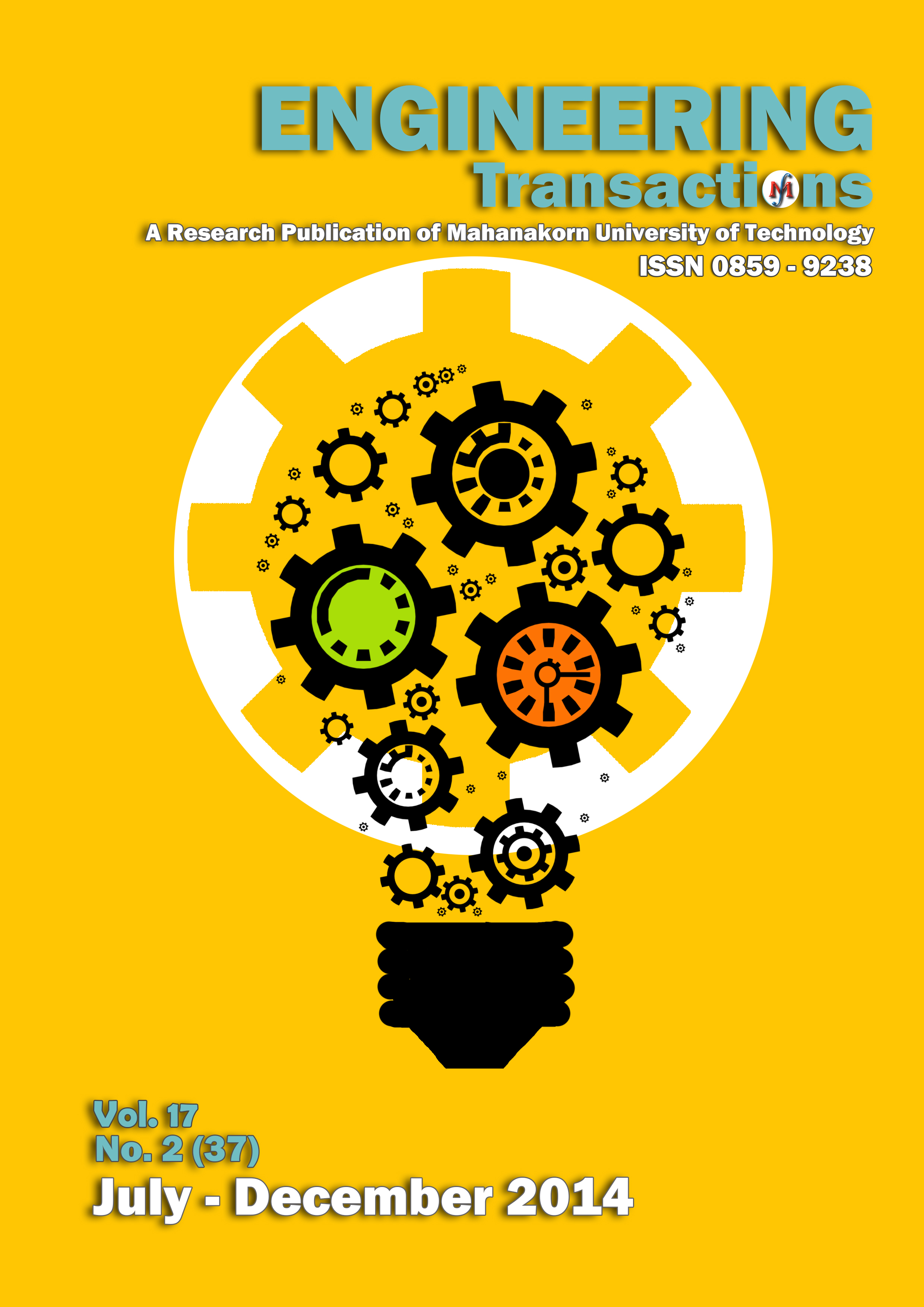Kansei-based Development Methodology on Robotics
Main Article Content
Abstract
A Kansei-based product methodology is to use the responses from customers by translating the emotion, impression and feelings on products in order to determine the design parameters. This is a suitable methodology for product and engineering design called “Kansei Engineering”, which aims to develop or improve products in business way. In this recent, many Japanese researchers on robotics have been developed on the combination ideas of “Kansei Engineering”, and “Robotics” to become an emotional robot that can express its emotion and feelings. In this academic paper, the Kansei with robot is discussed in the various topics on robotics in Japanese and European researches. The authors describe with a general view of them in relation to knowledge based on engineering from the view points of own authors.
Article Details
Copyright @2021 Engineering Transactions
Faculty of Engineering and Technology
Mahanakorn University of Technology
References
S. Nagasawa, “Kansei and Business”, Kansei Engineering International: International Journal of Kansei Engineering, vol. 3, No. 3, pp. 3-12, 2002.
Y. Shimizu, T. Sadoyama, M. Kamijo, S. Hosoya, M. Otani, K. Yokoi, Y. Horiba, M. Takatera, M. Honywood and S. Inui, “On-demand production systems of apparel on basis of Kansei Engineering”, International Journal of Clothing Science and Technology, vol. 16, pp. 32-42, 2004.
[Online]. Available: http://www.jske.org
M. Nagamachi, “Workshop 2 on Kansei Engineering”, in Proceedings of International Conference on Affective Human Factors Design, Singapore, 2001.
S. Lee, A. Harada and P.J. Stappers, “Pleasure with Products: Design based Kansei”, Pleasure with Products: Beyond usabitlity, W. Green and P. Jordan (eds.), Taylor & Francis, London, pp. 219-229, 2002.
[Online]. Available: http://www.yomiuri.co.jp/adv/chuo/dy/research/20100430.htm
S. Schütte, “Engineering Emotional Values in Product Design: Kasei Engineering in Development”, Ph.D. dissertation, Department of Mechanical Engineering, Linköpings Universitet, Linköping, Sweden, 2005.
S. Hashimoto, “Kansei Technology and Robotics: Machine with a Heart”, Kansei Engineering International, vol. 8, no. 1, pp. 11-14, 2009.
T. Usui, K. Kume, M. Yamano and M. Hashimoto, “A Robotic KANSEI Communication System Based on Emotional Synchronization”, in Proceedings of IEEE/RSJ International Conference on Intelligent Robots and Systems, France, pp. 22-26, Sep. 2008.
C.C. Ford, G. Bugmann and P. Culverhouse, “Eye Movement and Facial Expression in Human-Robot Communication”, in Proceedings of International Conference on Kansei Engineering and Emotion Research (KEER), pp. 717-730, March 2010.
S. Shibata, T. Yamamoto and M. Jindai, “A Mobile Robot Operation with Instruction of Neck Movement using Laser Pointer”, Kansei Engineering International, vol. 11, no. 2, pp. 51-58, 2012.
S. Sitjongsataporn and M.Kasuga, “Kansei Engineering: Development Methodology”, Engineering Transactions, vol. 16, no. 1 (34), pp. 45-50, Jan. - Jun. 2013.


